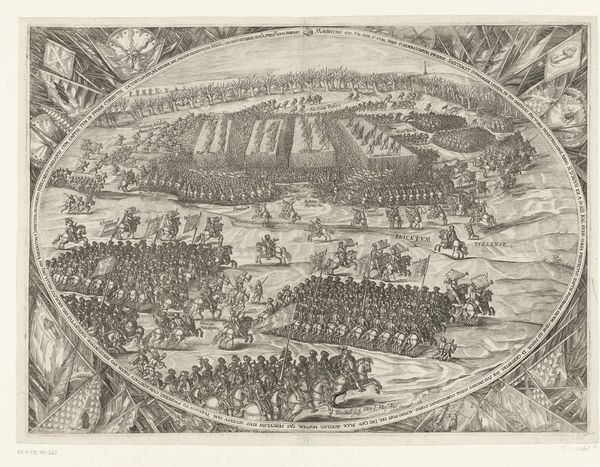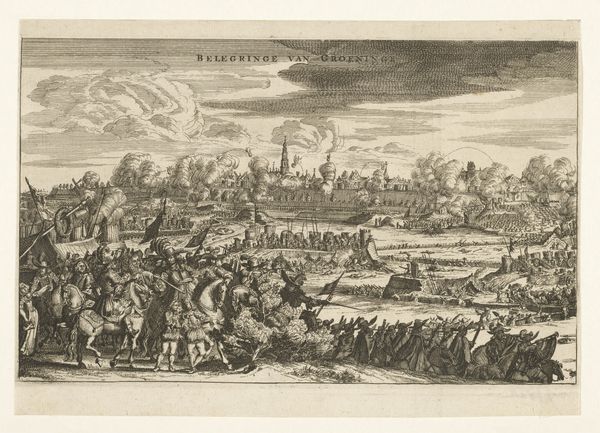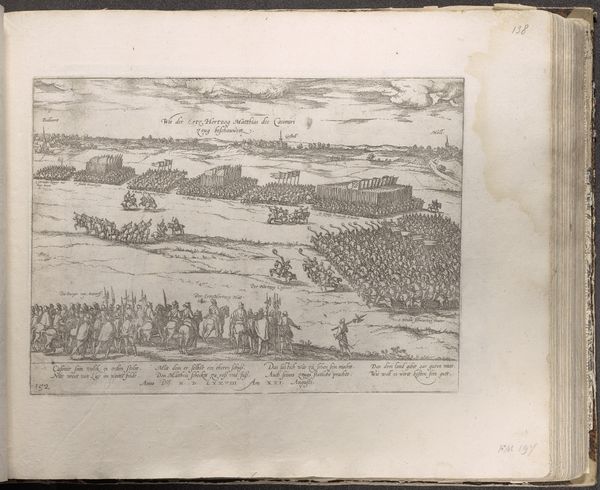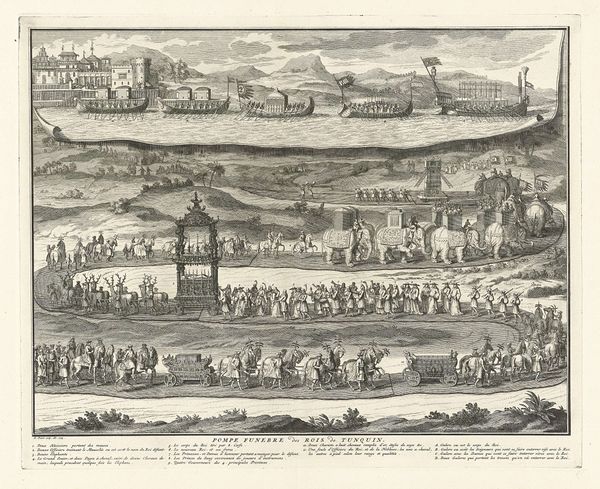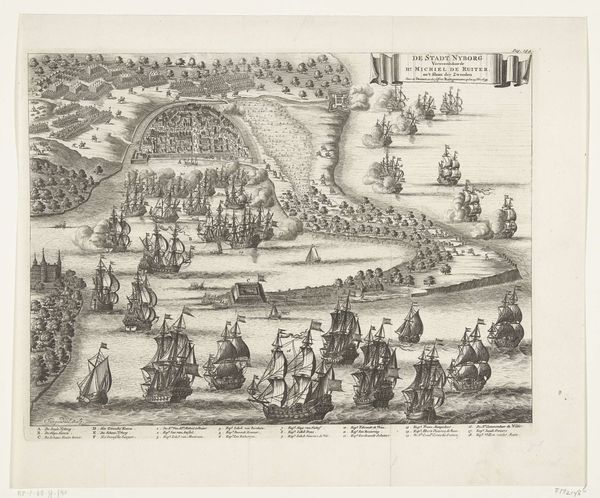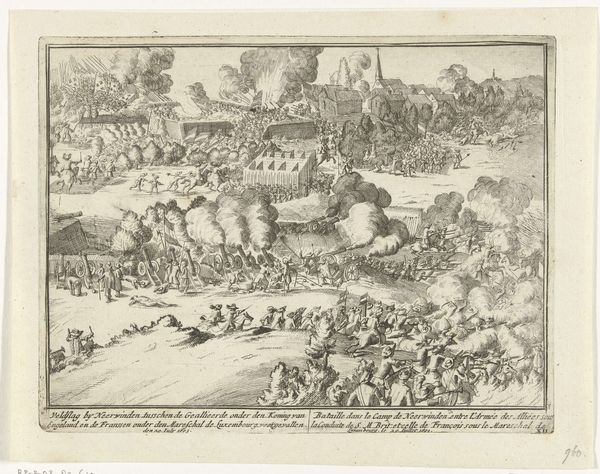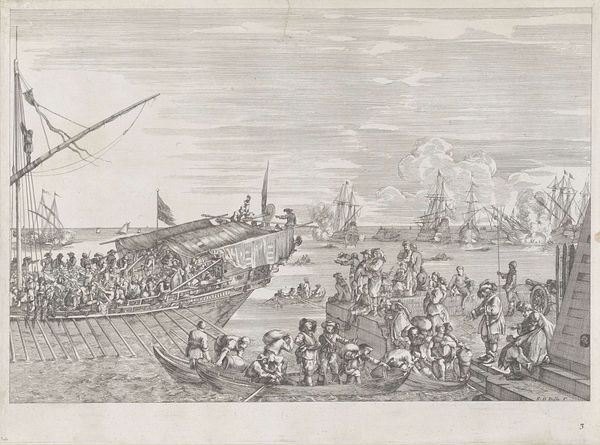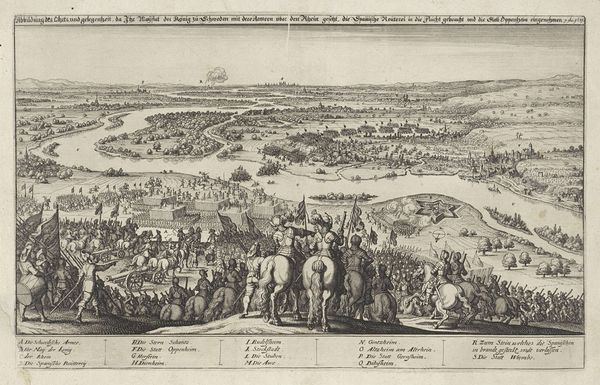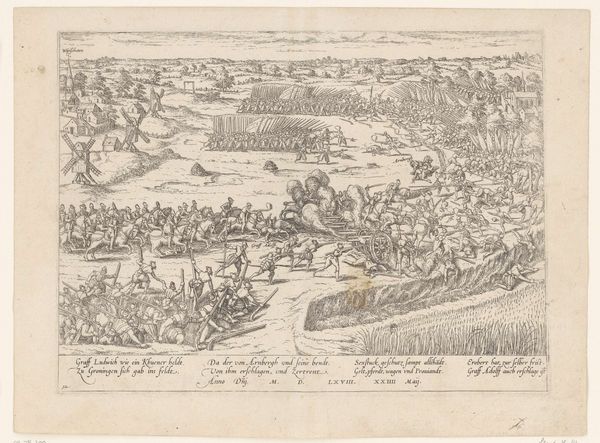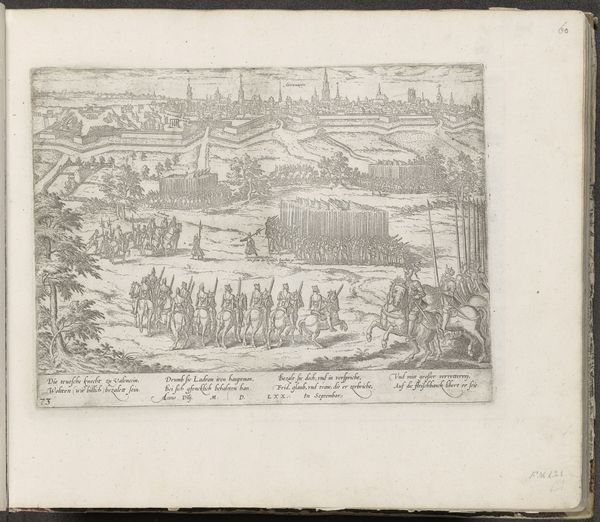
print, etching, engraving
#
narrative-art
#
baroque
# print
#
etching
#
perspective
#
cityscape
#
history-painting
#
engraving
Dimensions: height 480 mm, width 1465 mm
Copyright: Rijks Museum: Open Domain
Editor: Here we have Jan van Huchtenburg's "Bombardement van Geldern, 1703," a print from around 1727-1729. It feels like a panoramic snapshot of chaos and destruction. What layers of meaning am I missing? Curator: Well, let's consider the broader historical and social context. What does it mean to depict war, particularly a bombardment, with such… almost detached precision? Notice how Huchtenburg meticulously details the military engagement, yet also seems to frame it within a wider narrative of 18th-century power dynamics. It reflects a society grappling with almost constant conflict, doesn't it? Editor: It does. The detail almost romanticizes it, even though the subject matter should be horrifying. Does the "narrative art" theme sanitize or legitimize this history, by visually retelling a single version? Curator: Precisely! And who is this narrative *for*? Consider the audience. These prints were often commissioned or created for circulation among elites. Does that influence how violence is framed—distanced, perhaps even celebrated as victories solidify empires and hierarchies. How does it contribute to creating an acceptable collective memory, that is, what’s left out or downplayed? Editor: That makes me consider the victims, the city being bombarded – who probably aren’t represented here at all. This artwork presents one clear view of a "victorious" story. Curator: Exactly. By focusing on military strategy and composition, the print obscures the human cost and complexities of war. Think about the social inequalities magnified by conflict. Consider how this imagery reinforces, or perhaps challenges, societal perceptions of heroism and sacrifice. Can we extract from this etching echoes of social movements protesting the power of these dominating wars? Editor: I hadn't thought about it that way, about whose story is being told and for what purpose. It’s much more than just a historical record. Curator: Yes! By looking at it through an intersectional lens, we reveal its role in shaping not just our understanding of the past but our engagement with the present. Hopefully this will help to question and reconstruct it into a better future.
Comments
No comments
Be the first to comment and join the conversation on the ultimate creative platform.
